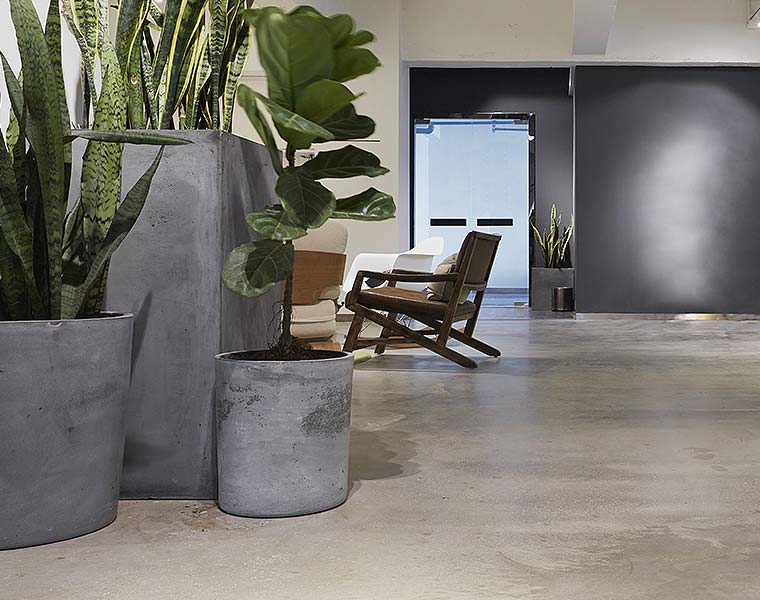Biomimicry combines the Greek word for ‘life’ (bios) and the word which means ‘to imitate’ (mimesis) and has been adopted by our industry as a way to describe the implementation of natural processes and elements within commercial interior design. The act of mimicking the colours, textures and processes found in nature is intrinsically related to biophilic design which we touched on in our Clerkenwell Design Week 2018 trend report and involves satisfying an innate human affinity to be close to nature.
Just last month, Apple unveiled its brand-new flagship store in Milan which features a 26-foot fountain entrance through which people can enter the shop and relive the simple childhood pleasure of running through water fountains.
The water is encased by glass which creates a kaleidoscope of natural experiences as the time of day and seasons evolve, while the shop floor itself features local Italian stone and more than 20 Gleditsia Sunburst trees.
But where does this replication of nature within interior design fit in with the modern workplace and why?
The benefits of a biophilic office:
As part of research carried out by Interface for their Human Spaces report on the Global Impact of Biophilic Design in the Workplace, it was revealed that 15% of employees with biomimetic features in their working environment had a higher level of wellbeing, while 6% were more productive and 15% felt more creative.
Improved physical health and less absentees – One of the biggest ways you can take advantage of this particular benefit is by providing plenty of natural light within the workspace. Research by the National Renewable Energy Laboratory discovered that access to sufficient daylight can help to kill certain bacteria, aid sleep and regulate Vitamin D, serotonin and melatonin levels to fight common colds, flus and bone diseases.
Take full advantage of existing window space and consider installing skylights if possible in order to maximise the amount of natural light within the workspace during the day. You can supplement this by making the most of outdoor areas such as terraces and courtyards to encourage more meetings and socialising outside.
Lower stress levels and improved mental wellbeing – The easiest and most low-cost way to introduce biomimetics into the workspace is with office plants and living walls. Doing so boosts oxygen levels and improves air quality which in turn supports cognitive function and reduces mental fatigue.
Plants, along with other natural elements such as daylight, water and organic colour palettes have also been proven to reduce stress levels, decrease blood pressure and nurture a much calmer workforce.
A boost in concentration and productivity – In bettering the mental wellbeing of a workforce and taking measures to control stress in the workplace through biophilic design, you are automatically boosting concentration levels and productivity. Making the office a place where staff feel calm, comfortable and under control is one of the most effective ways to foster a happy, healthy working environment.
Better retention of new talent – Alongside the health benefits and improvements in productivity, a biophilic workplace is a great way to attract and retain new talent. Investing in biomimicry – whether it’s office plants, raw concrete flooring or a just a refresh of your interior colour palette – shows that you’re a progressive workspace which keeps the personal and professional wellbeing of your workforce in mind.
So, to conclude – according to the Human Spaces study, 63% of us are now working in urban settings such as towns and cities. That means that for a majority of us, our connection with nature is becoming increasingly distant as city life and technology take over.
This could explain why the trend for biomimetic workplaces and biophilic office design has become so popular during recent years. If we can’t be as close to nature anymore, it’s time to start bringing a bit of the great outdoors indoors to reap the plethora of benefits that come with modern day biomimicry.
